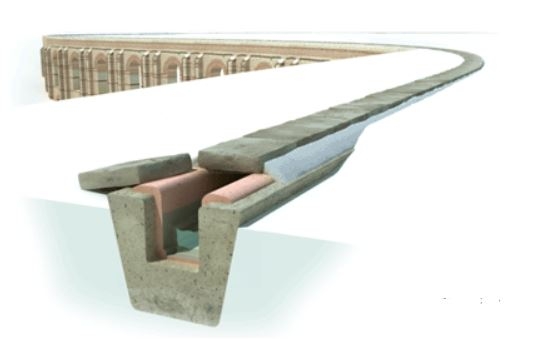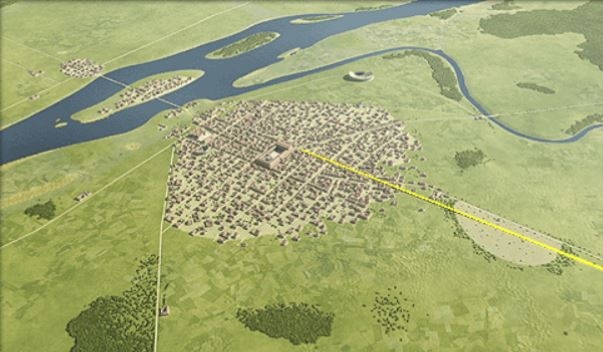- Home
- The city
- The early Roman city
- The aqueduct
Next slide
Previous slide
Reconstitution of the aqueduct. 3D graphics ©A.-B. Pimpaud.
Tracing of the aqueduct arriving in the city of Lutetia.
Early in their history, the inhabitants of Lutetia used traditional sources such as wells, streams, and rainwater to satisfy their needs for water. Over time, however, because of the growth of the city's monumental infrastructure-the mark of every civic centre-and in particular the construction of water-related structures such as baths and fountains, these needs increased dramatically. To meet the demand for water, the community had to construct a system for bringing in water from collection points outside the city. The aqueduct provided one of the city's principal attractions: publicly accessible water.

